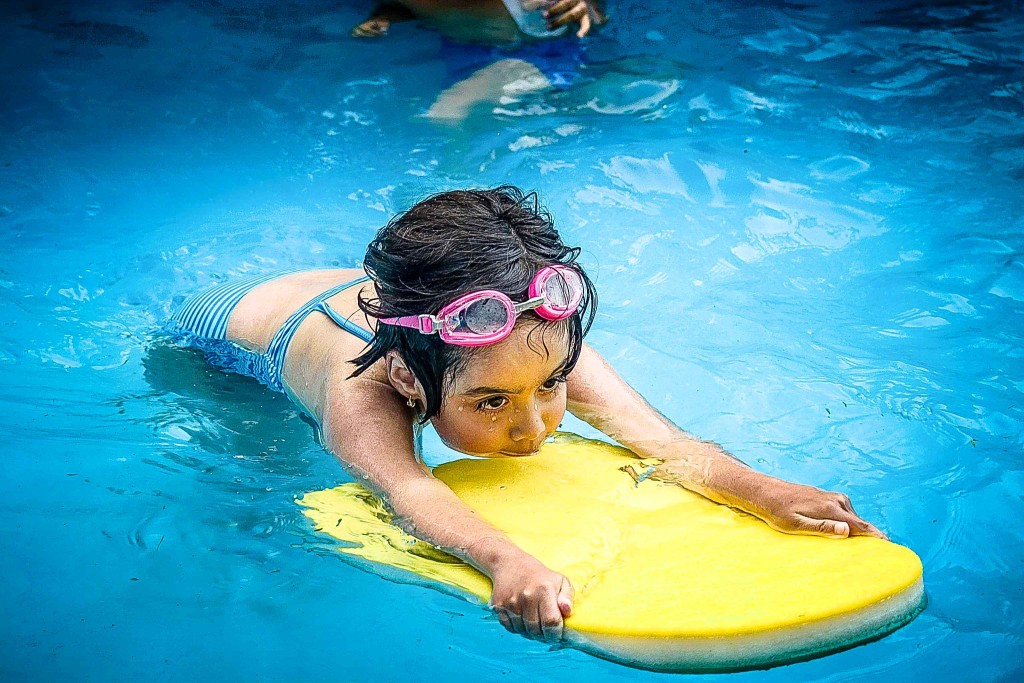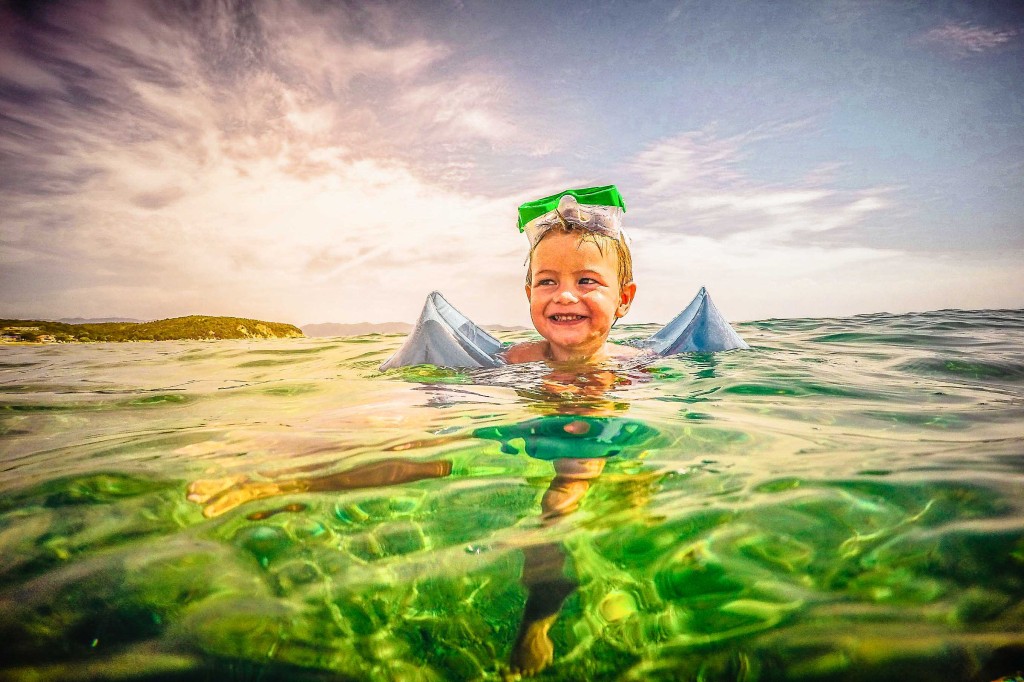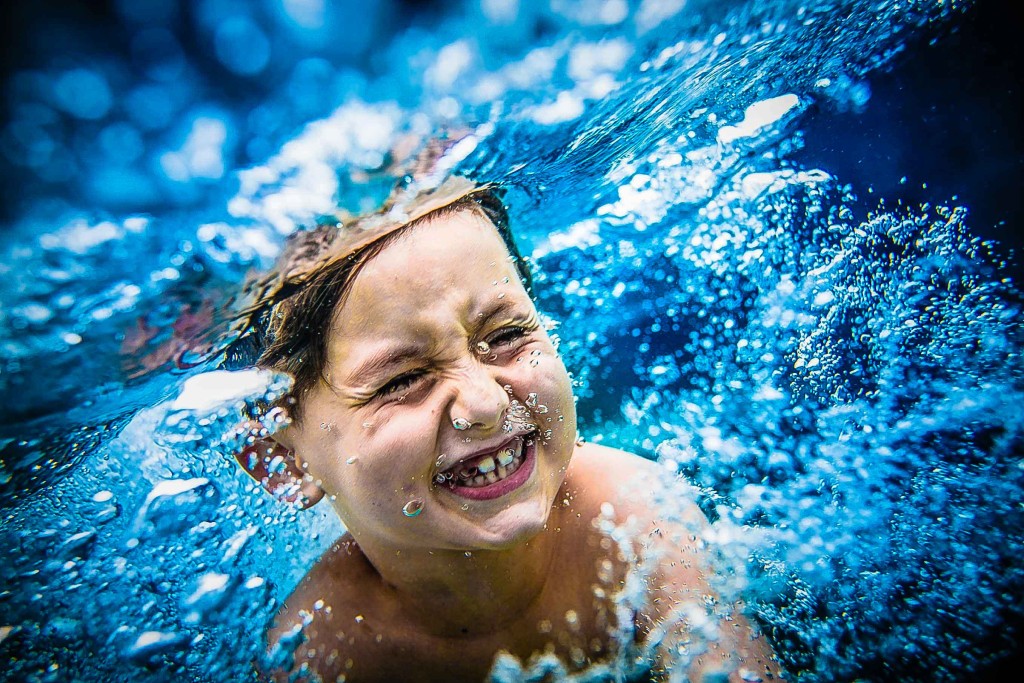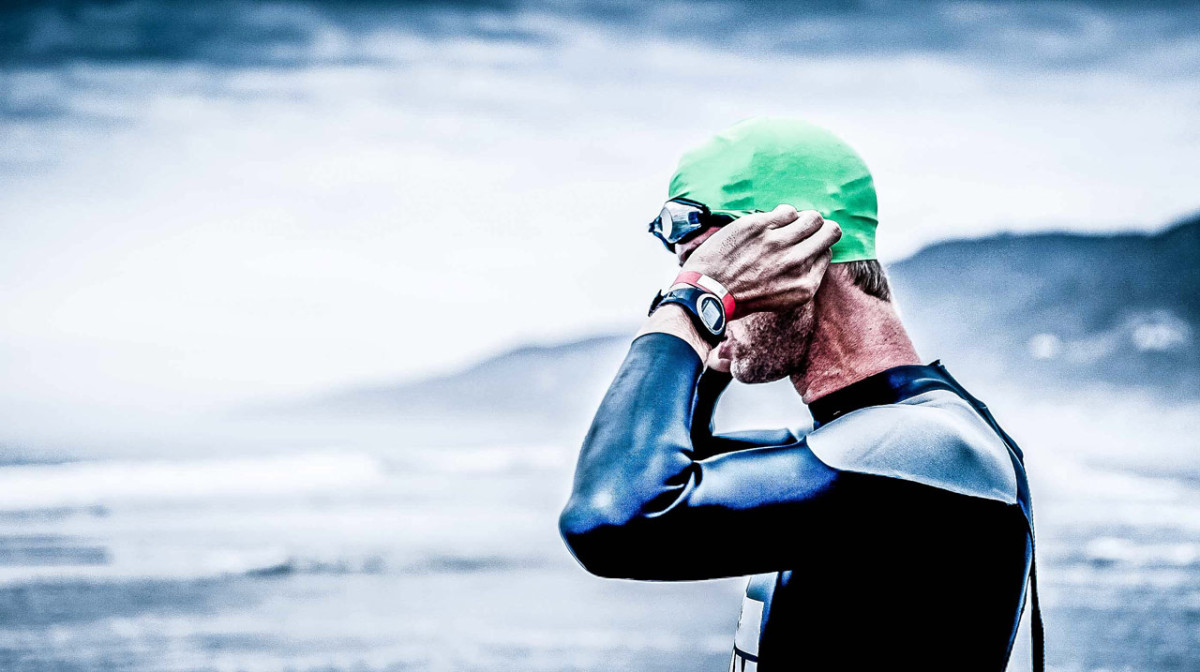As a coach, I hear a lot about my clients’ swimming fears. And let’s be honest, I’m not immune to fear either. Triathlon is a challenging sport – it can take you to your limits in a lot of ways – so it’s only natural to feel some trepidation, or even downright terror, when you start to think about your race.
Luckily, there are steps you can take to bring that fear down a few notches so that you can focus on what matters: having a great race.
You might not be surprised to hear that the three fears that I encounter the most all involve swimming: swimming in a pool, swimming in open water and swimming in a race.
I know I sound like a real estate agent shouting, “Location, location, location!” But there is a huge difference between these three types of swimming, and unique fears that come with each.
1. Swimming in a Pool

The Fear:
I can’t even swim one length without getting out of breath – how am I going to complete a whole course?
The Solution:
RELAX and BREATH! Often, when you feel like you’re “gasping for air” you are actually in need of the opposite –to expel carbon dioxide stuck in your lungs. Practice exhaling with your face under water blowing bubbles through both your nose and your mouth. By releasing this tension you should be able to swim at a very light effort (like a warmup jog) without calling upon your large muscle groups to use more oxygen.
Take a rest at the end of one lap – say 20 seconds. Now go again and rest for only 15 seconds. Keep taking away additional rest in between your laps and eventually you’ll get to zero. The same principle applies when doing sets of 50 and 100 – shorten the time between intervals until you can increase the distance per set. You’ll be swimming 500 repeats in no time!
2. Swimming in Open Water

The Fear:
What if I need to stop?
The Solution:
WEAR A WETSUIT and TURN OVER! Unless you’re in a super-hot climate and wearing a wetsuit would actually be detrimental to your performance, chances are, as a beginner you’ll be wearing one. Not only does a wetsuit add warmth but it increases your buoyancy. This means you’ll be skimming along the surface of the water like an otter. If and when you get tired, flip over onto your back and spread eagle just like you did when you were a kid. Let me be clear that a wetsuit is NOT an actual lifesaving device, but the break in energy should be enough for you to let your hear rate settle back down a little before setting off again.
The event organizers are just as much concerned about your safety as you are. Rules say that if you need to stop and hold on to a kayak or paddle board you may do so without penalty (as long as you do not use it to propel yourself forwards).
Other solutions to breaking the fear of open water include familiarity (just getting out there more often), swimming in a group or where a lifeguard is on duty, and practicing an alternative stroke to freestyle (breast or backstroke, for example) so that you’ve got lots of tools in your arsenal if you need to break them out.
3. Swimming in a Race

The fear:
What if I get kicked, punched, bumped, climbed over or worse?!
The solution:
Control what YOU can control.
I would hazard that 90% of the first-timers in your wave share the same fear, and I bet none of them want to get kicked or punched either. It does happen, and I’m sure apologies would be communicated if there weren’t bubbles being blown instead of words, but you have to believe me when I say it’s nothing personal!
Have you watched the start of a triathlon, and are asking yourself how nobody drowns in the fray? It always looks more chaotic from the shore. When you’re in the thick of things there are really only 1-3 people around you at any time.
Control what you can control. Stay in your own head – try counting your strokes or singing a song! By focusing on your own form, rhythm and direction you can roll out the race strategy that you practiced in the pool. Yes, be prepared for a stray body to cut in front of you at some point, but don’t let it shake you from your plan.
Your race is not tomorrow. The whole point of training is to progress as you get ready for the event. Keep up your frequency and vary the intensities from time to time. You can even recreate open water in the pool by swimming with friends or a group. And remember: even in the middle of a scrum 500m from the shoreline you can reflect on your achievements, soak up the experience and have fun doing it!
– Coach Jas
[su_button url=”http://tritrain.ca/connect/” target=”self” style=”flat” background=”#8dc73f” color=”#FFFFFF” size=”4″ wide=”no” center=”yes” radius=”auto” icon=”” icon_color=”#FFFFFF” text_shadow=”none” desc=”” onclick=”” rel=”” title=”” class=”button-home”]Contact Coach Jason[/su_button]
